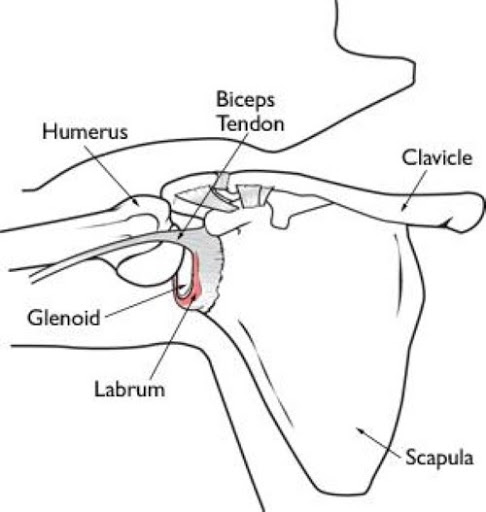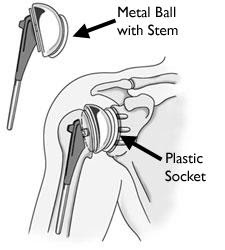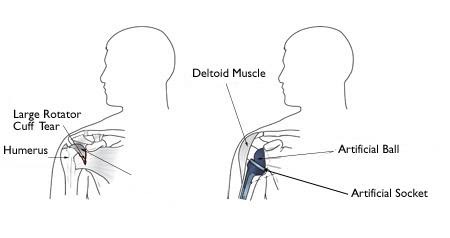Orthopedic Specialists of Idaho offers unmatched dedication and care, providing the best shoulder surgery Idaho Falls has to offer.
Shoulder pain can be caused by a number of things. To identify the cause and the best treatment solution, it helps to understand the anatomy of the shoulder.
The shoulder consists of three bones: the upper arm bone (humerus), the collarbone (clavicle), and the shoulder blade (scapula). Holding these bones together are a group of muscles that make up the rotator cuff.
The top of the upper arm bone rests in the glenoid, a socket in the shoulder blade. A soft tissue rim (the labrum) helps stabilize the joint by surrounding the socket.
CAUSES OF SHOULDER PAIN
The most common causes of shoulder joint pain is arthritis, generally osteoarthritis, rheumatoid arthritis, or post-traumatic arthritis.
Osteoarthritis involves the breakdown of cartilage as the bones rub against each other. This can cause discomfort and generally occurs in people over age 50 or when there is a family history of osteoarthritis.
Rheumatoid arthritis is caused by a chemical change in the synovial membrane. This is the lining around the shoulder joint that products synovial fluid, a fluid that helps reduce friction between the surfaces of the shoulder bones. Symptoms can include chronic inflammation, cartilage loss, pain, and stiffness.
Post-traumatic arthritis can occur after an injury to the shoulder. The shoulder bone and cartilage may not heal properly after the injury, resulting in additional joint damage.
However, arthritis is not the only cause of shoulder joint pain. Tears to the ligaments can also cause persistent pain that requires medical attention.
A glenoid labrum tear (shoulder joint tear) can occur when the rim surrounding the shoulder socket moves in a repetitive motion or from a traumatic injury, including falling on an outstretched arm, sudden pull when lifting something heavy, a violent overhead reach, or a direct blow to the shoulder. Symptoms can include shoulder dislocations, loss of strength, pain with lifting your arms, locking, popping, grinding, or decreased range of motion.

TREATMENT OPTIONS
So, what are your options if you sustain a shoulder injury or have persistent pain resulting from arthritis?
If you are experiencing consistent shoulder pain, you should visit an orthopedic surgeon to evaluate the pain and help you find a solution. You shouldn’t have to live with persistent pain in any joint of your body.
Your orthopedic surgeon will evaluate your shoulder and ask you questions to help determine the source of the pain. An x-ray, CT scan, or MRI may be necessary depending on the extent of the injury. In the case of joint tears, a CT scan or MRI (and sometimes even surgery) are the only ways to diagnose the injury.
Treatment options may include:
- Medication for the pain
- Physical therapy
- Joint fluid supplements
- Joint replacement surgery
Your doctor may prescribe anti-inflammatory medication and physical therapy for less severe injuries. When medications, physical therapy, and other non-surgical methods of treatment don’t help, surgery might be the best treatment option to help you continue living a normal life.
Let’s go over the two surgical options for shoulder joint revision.
TOTAL SHOULDER REPLACEMENT VS REVERSE TOTAL SHOULDER REPLACEMENT
There are two main surgeries to address shoulder joint injuries: total shoulder replacement and reverse total shoulder replacement.
Before determining the best surgical procedure for you, your surgeon will evaluate your situation carefully and discuss with you the options to best meet your individual needs.
TOTAL SHOULDER REPLACEMENT
When the joint surfaces of your shoulder wear down, they become arthritic and that’s what causes your pain. A common solution in arthritic shoulders is to replace the arthritic surface with an artificial joint.
In the case of a total shoulder replacement, a highly polished metal ball replaces the end surface of the upper arm bone. A stem on the ball is inserted into the bone to help it stay in place.
Then on the receiving end, a plastic socket is placed into the glenoid (socket in the shoulder blade). This socket is usually implanted into the glenoid with bone cement.
Sometimes though, the socket doesn’t need to be replaced. If you have healthy cartilage in the glenoid, then the ball at the end of the humerus may be the only thing that needs to be replaced. This procedure is called a hemiarthroplasty.
A total shoulder replacement is generally not the best treatment for individuals with more severe injuries, like:
- Completely torn rotator cuffs and severe weakness in the arms
- Rotator cuff tearing caused by severe arthritis
- A previous failed shoulder replacement
In those cases, a reverse total shoulder replacement may be the answer.

REVERSE TOTAL SHOULDER REPLACEMENT
A reverse total shoulder replacement is just what it sounds like. It reverses the parts of the total shoulder replacement so the ball is placed in the glenoid socket and the plastic socket is placed on the end of the humerus.
The reason for this is that sometimes a conventional total shoulder replacement can still leave individuals with pain and the inability to lift their arms past a 90-degree angle. This can become very debilitating.
By switching where the socket and ball are placed, the patient is able to use the deltoid muscle instead of their torn rotator cuff to lift their arm.
Call Orthopedic Specialists of Idaho today if you are experiencing persistent shoulder pain. Our experienced staff will help you get the treatment you need to improve your quality of life.
